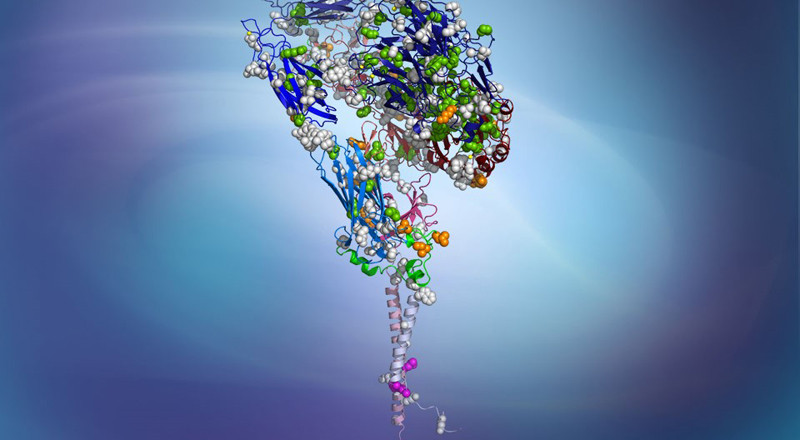About Hoxa
There are many variations of passages of Lorem Ipsum available but the majority have suffered alteration in some form by injected humour or randomised words which dont look even believable genera on the Internet tend to repeat predefined chunks necessary making Internet.Diffrent Websites
Get in Touch
- 2901 Marmora Road, Glassgow,
Seattle, WA 98122-1090 - (088) -234 -456 -7890
- (088) -234 -456 -7890
- info@yourdomain.com
- http://domainname.com
- marta.filizola@mssm.edu
- + 1 212-659-8690
Structure-Function Relationships of beta3 Integrins

A close and productive collaboration with the laboratory of Dr. Barry Coller at Rockefeller University has kept part of our research interests focused on the study of structure-function relationships of both aIIbb3 and aVb3 integrins. The lab’s interest in these systems stems from the exciting computational challenges they pose, and the opportunity to develop and/or apply cutting-edge computational approaches that will render accurate representations of the dynamic allosteric mechanisms regulating integrin function.
During the past 20 years we have been able to provide an innovative structure-guided approach to the functional studies carried out in the lab of our experimental collaborator. Specifically, we have contributed i) Early three-dimensional molecular models of aIIbb3 using aVb3 as a template; ii) Important structural insights into the ligand-associated metal binding site (LIMBS, later re-termed SyMBS) of β3 integrins from molecular dynamics (MD) simulations; iii) Specific molecular determinants for limiting extension at the αIIb genu or ligand binding to integrin αIIbβ3; iv) Information about the overall common conformational changes occurring in β3 integrins upon hybrid domain swing-out using targeted MD simulations; v) Mechanistic information about αIIbβ3- and αVβ3-specific antagonists that stabilize the receptors in their resting states, vi) Structure-guided design of potent pure antagonist of β3 receptors; vii) Identification of novel antagonists by virtual screening, viii) Multimicrosecond, all-atom MD simulations of the talin-driven inside-out activation mechanism of αIIbβ3 integrin, and ix) Predictions of the functional effect of αIIbβ3 variants defined by next-generation sequencing.
Representative Publications
Zhu, J., Zhu, J., Negri, A., Provasi, D., Filizola, M., Coller, B.S., Springer, T.A. “Closed headpiece of integrin αIIbβ3 and its complex with an αIIbβ3-specific antagonist that does not induce opening” Blood (2010) 116 (23):5050-5059.
Negri, A., Li, J., Naini, S., Coller, B.S., Filizola, M. “Structure-Based Virtual Screening of Small-Molecule Antagonists of Platelet Integrin αIIbβ3that Do Not Prime the Receptor to Bind Ligand” Journal of Computer-Aided Molecular Design (2012) 26 (9): 1005-1015
Zhu, J., Choi, W.-S., McCoy, J. G., Negri, A., Zhu, J., Naini, S., Li, J., Shen, M., Huang, W., Bougie, D., Rasmussen, M., Aster, R., Thomas, C. J., Filizola, M., Springer, T. A., Coller, B. S. “Structure-Guided Design of a High-Affinity Platelet Integrin αIIbβ3Receptor Antagonist That Disrupts Mg2+ Binding to the MIDAS.” Science Translational Medicine (2012) 4: 125ra32
Buitrago, L., Rendon, A., Liang, Y., Turro, E., Simeoni, I., Negri, A., ThromboGenomics Consortium, Filizola, M., Ouwehand, W.H., Coller, B.S. “αIIbβ3 Variants Defined by Next Generation Sequencing: Predicting Variants Likely to Cause Glanzmann Thrombasthenia” (2015)Proceedings of the National Academy of Science USA, 112(15):E1898-907.
Zafar, H., Shang, Y., Li, J., David, G.A. III, Fernandez, J.P., Molina, H., Filizola, M., Coller, B.S. “αIIbβ3-Binding to a Fibrinogen Fragment Lacking the g-chain Dodecapeptide is Activation Dependent and EDTA-Inducible (2017) Blood Advances 1:417-428.
, J., , Y., , Y., , W., , J., , L., , J., , X., , R., ,Y., , R., , T., N, T., , T., , K., , Y.,, C., , D.,, M., , J., , R., , T., , K., , S.L., , A.M., , M., , M.A.,Novel Pure αVβ3 Integrin Antagonists That Do Not Induce Receptor Extension, Prime the Receptor, or Enhance Angiogenesis at Low Concentrations” ACS Pharmacology & Translational Science (2019) 2, 6, 387-401.
Nesic, D., Zhang, Y., Spasic, A., Li, J., Provasi, D., Filizola, M., Walz, T., and Coller, B.S. “Cryo-
Nešić, D., Bush, M., Spasic, A., Li, J., Kamata, T., Handa, M., Filizola, M., Thomas Walz, T., Coller, B.S., “Electron Microscopy of the αIIbβ3–PT25-2 Fab Complex Identifies a Mechanism by Which PT25-2 Induces αIIbβ3 Ligand Binding” (2021) Blood Advances, 5(7):1781-1790. [PMID: 33760023]
Sen, S., Spasic, A., Sinha, A., Wang, J., Bush, M., Li, J., Nešić, D., Zhou, Y., Angiulli, G., Morgan, P., Salas-Estrada, L., Takagi, J., Walz, T., Coller, B., Filizola, M. “Structure-Based Discovery of a Novel Class of Small-Molecule Pure Antagonist of Integrin aVb3” (2022) Journal of Chemical Information and Modeling Oct 24. doi: 10.1021/acs.jcim.2c00999.
 Creative Style
Creative Style Portfolio Style
Portfolio Style One Page Style
One Page Style Landing Page
Landing Page